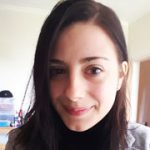 Zebrafish are one of the most well studied animals on the planet. But how they came by their beautiful black and gold stripes is more of a mystery. Our new research used mathematical modelling – and detailed observations of mutant zebrafish patterns – to get to the bottom of one of nature’s oldest secrets.
Zebrafish are one of the most well studied animals on the planet. But how they came by their beautiful black and gold stripes is more of a mystery. Our new research used mathematical modelling – and detailed observations of mutant zebrafish patterns – to get to the bottom of one of nature’s oldest secrets.
From a distance zebrafish stripes look like long thin blocks of black or gold pigment. But on closer inspection it can be seen that these stripes are made up of thousands of small and distinct dots of colour. Each dot is a single pigment cell. The three cell types that produce the pattern are black melanophores, yellow xanthophores and silver and blue iridophores. Our research focused on understanding how enough of these cells interacting in the right way can result in the alternating striped patterns on a zebrafish.
The mathematical theory that has predominated explanations of how zebrafish’s stripes emerged is Turing patterning. The mechanism is named after the visionary war hero, computer pioneer and mathematician Alan Turing who first suggested it. In Turing patterns two different types of “agent” (melanophores and xanthophores in most zebrafish models) move around randomly and interact with each other in a special way, giving rise to a range of possible patterns. Although the patterns look convincing, scientists have not been able to prove this theory of animal coat patterning.
But our study has demonstrated that the pattern formation mechanism is more complicated than a simple Turing model might suggest. As well as melanophores and xanthophores, we know iridophores also play an important role. These reflective cells give zebrafish their characteristic silvery appearance. Experiments have shown that without iridophores (or either of the other two cell types) the zebrafish’s characteristic striped pattern doesn’t form properly.
Paper: A quantitative modelling approach to zebrafish pigment pattern formation by Jennifer P. Owen, Robert N. Kelsh and Christian A. Yates in eLIFE.
